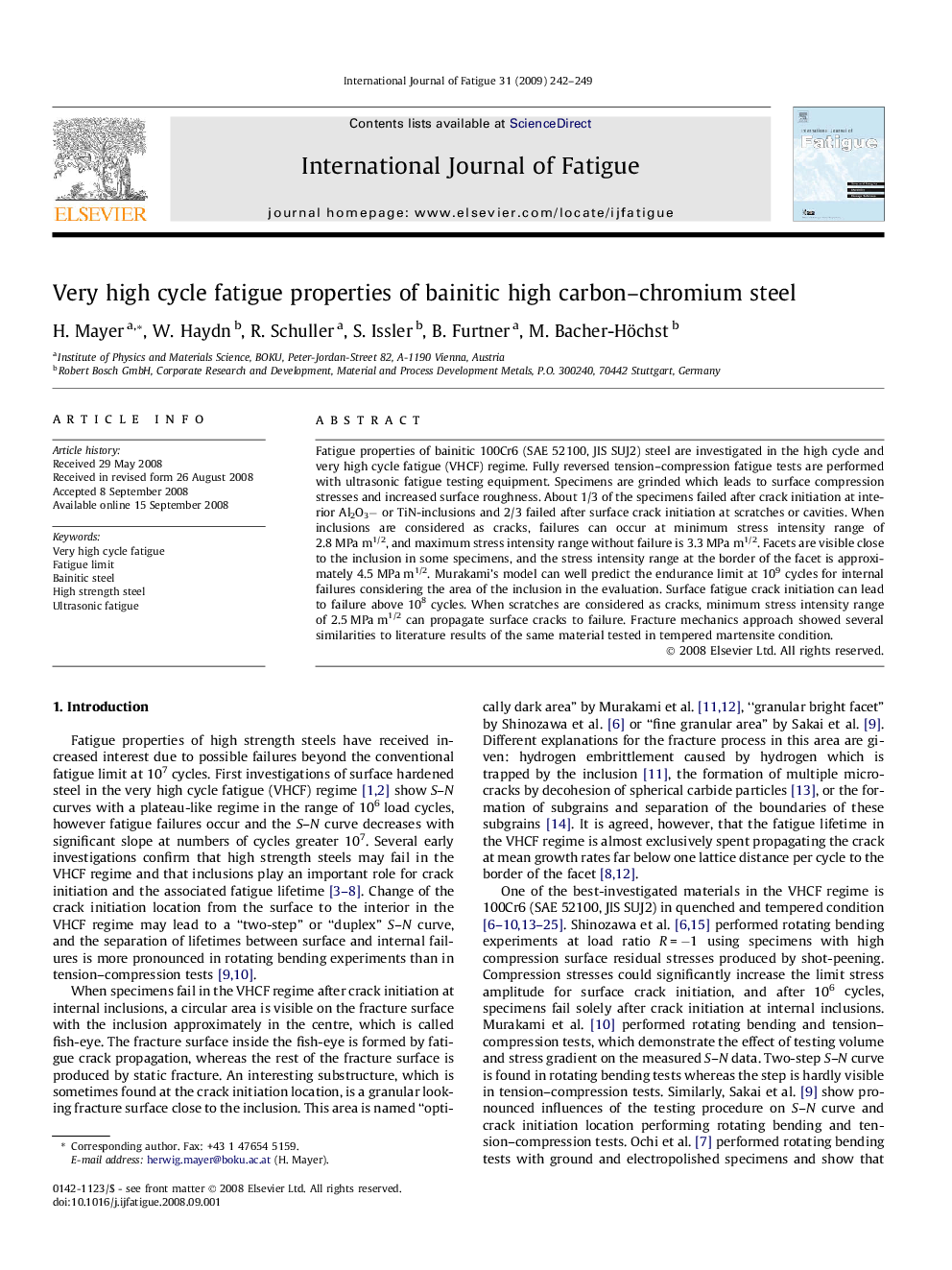| Article ID | Journal | Published Year | Pages | File Type |
|---|---|---|---|---|
| 777854 | International Journal of Fatigue | 2009 | 8 Pages |
Fatigue properties of bainitic 100Cr6 (SAE 52100, JIS SUJ2) steel are investigated in the high cycle and very high cycle fatigue (VHCF) regime. Fully reversed tension–compression fatigue tests are performed with ultrasonic fatigue testing equipment. Specimens are grinded which leads to surface compression stresses and increased surface roughness. About 1/3 of the specimens failed after crack initiation at interior Al2O3− or TiN-inclusions and 2/3 failed after surface crack initiation at scratches or cavities. When inclusions are considered as cracks, failures can occur at minimum stress intensity range of 2.8 MPa m1/2, and maximum stress intensity range without failure is 3.3 MPa m1/2. Facets are visible close to the inclusion in some specimens, and the stress intensity range at the border of the facet is approximately 4.5 MPa m1/2. Murakami’s model can well predict the endurance limit at 109 cycles for internal failures considering the area of the inclusion in the evaluation. Surface fatigue crack initiation can lead to failure above 108 cycles. When scratches are considered as cracks, minimum stress intensity range of 2.5 MPa m1/2 can propagate surface cracks to failure. Fracture mechanics approach showed several similarities to literature results of the same material tested in tempered martensite condition.
